mobile View, to the German Version tap the flag


- to 2009: Saint Helena Colony, with the Dependencies Ascension Island, Tristan da Cunha, Inaccessible Island, Nightingale Island, Gough Island
- possession of United Kingdom
• Flags
• Historical Flags
• Meaning/Origin of the Flag
• Coat of Arms
• Meaning/Origin of the Coat of Arms
• Map
• Numbers and Facts
• History
• Origin of the Country's Name

Union Flag → quasi National flag,
Flag of United Kingdom,
ratio = 1:2,
Source, by: Wikipedia (EN)





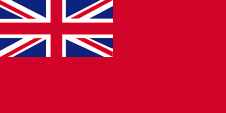
Merchant flag,
ratio = 1:2,
Source, by: Flags of all Nations





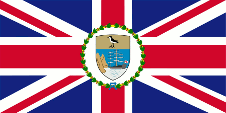
since 1999,
Flag of the Governor,
ratio = 1:2,
Source, by: Wikipedia (EN),
Flags of the World



Saint Helena
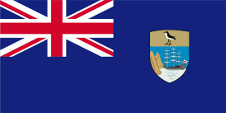
since 2019,
Flag of the government (state flag),
ratio = 1:2,
Source, by:
Wikipedia (EN),
Flags of the World,
Corel Draw 4



Tristan da Cunha
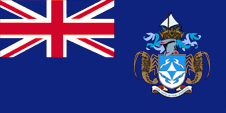
since 2002,
Flag of the government (state flag),
ratio = 1:2,
Source, by:
Wikipedia (EN),
Flags of the World



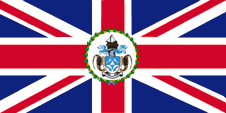
since 1999,
Flag of the Administrator,
ratio = 1:2,
Source, by: Wikipedia (EN),
Flags of the World



Ascension
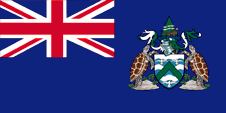
since 2013,
Flag of the government (state flag),
ratio = 1:2,
Source, by: Flags of the World




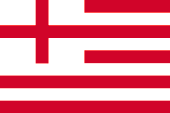
ca. 1659–1707,
Flag of the English East India Company,
Source, by: commons.wikimedia.org



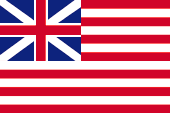
1707–1801,
Flag of the British East India Company,
Source, by: commons.wikimedia.org



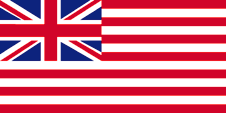
1801–1833,
Flag of the British East India Company,
Source, by: commons.wikimedia.org



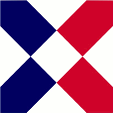
ca. 1811, Tristan da Cunha,
unofficial flag,
ratio = 1:1,
Source: Flags of the World



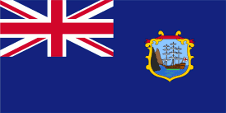
1874–1984, Saint Helena,
Flag of the government (state flag),
ratio = 1:2,
Source, by: Flags of the World,
Corel Draw 4



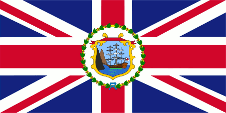
1944–1984, Saint Helena,
Flag of the Governor,
ratio = 1:2,
Source, by: Wikipedia (EN),
Flags of the World



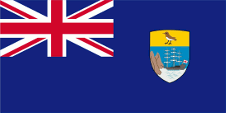
1984–2019, Saint Helena,
Flag of the government (state flag),
ratio = 1:2,
Source, by: Flags of the World,
Corel Draw 4



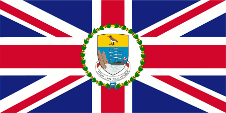
1984–1999, Saint Helena,
Flag of the Governor,
ratio = 1:2,
Source, by: 1.) Flags of the World, 2.) Flags of the World



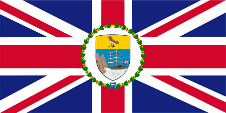
1999–2019, Saint Helena,
Flag of the Governor,
ratio = 1:2,
Source, by: 1.) Flags of the World, 2.) Flags of the World




Saint Helena and its dependencies are British possessions. Their flags are subject to the regulations of the British Ensign system. St. Helena and its dependencies became a British crown colony in 1833, the flag of United Kingdom was raised, the islands became part of the United Kingdom, received their own administration and their own governor. On land, and until 1864 also at sea, the individual citizen and also the authorities represented their status as citizens or organs of the United Kingdom by the use of the Union Jack, then called "Union Flag".
United Kingdom had introduced a flag system in 1864 in which:
• Warships use a so-called "White Ensign" (naval flag), a white flag often with a red St. George's cross throughout and with the Union Jack in the upper corner,
• Merchant ships use a so-called "Red Ensign" (also called "Civil Ensign" → citizen flag, the actual merchant flag), a red flag with the Union Jack in the upper corner, and
• Governmental ships use a "Blue Ensign" (flag of the government → the actual state flag), a blue flag with the Union Jack in the upper corner.
Since 1865, colonial government ships were permitted to use a Blue Ensign with a badge in the flying end. From this point on, only the British Union Jack was to be used for all other purposes on land and the usual red British merchant flag, the "Red Ensign", at sea. If the British Admiralty had granted to the colony the appropriate permission, merchant ships and private sailors from these colony were allowed to use a Red Ensign with the Bagde. This was not the case for Saint Helena.
For Tristan da Cunha and Ascension were introduced own governmental flags ("Blue Ensigns") for use by the authorities, in 2002 and 2013.
Source: Die Welt der Flaggen,
Wikipedia (EN),
Flags of the World,
Volker Preuß

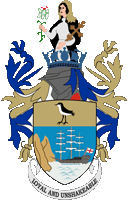
since 2019,
Coat of arms of Saint Helena,
Source, by: Corel Draw 4, sainthelena.gov.sh
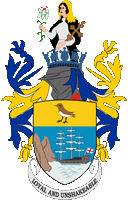
1984–2019,
Coat of arms of Saint Helena,
Source, by: Corel Draw 4

since 2019,
Bagde of Saint Helena,
Source, by: Wikipedia (EN)

1984–2019,
Bagde of Saint Helena,
Source, by:
Corel Draw 4, Flags of the World
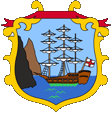
1874–1984,
Bagde of Saint Helena,
Source, by: Flags of the World

The today's coat of arms of Saint Helena was introduced on 30th of January in 1984. It shows an escutcheon with a three-master with reefed sails and an English flag at the stern at the foot of high, steep cliffs. The scene is considered a symbol of the taking possession by the English East India Company in 1659. In the head of the shield there is a golden field with a plover, which is supposed to represent the local fauna. Gold and blue blankets appear to the left and right of the shield. Above the shield is a helmet with an iron crown made of heraldic shields and sails. Above the crown appears Saint Helena with the cross. She is holding a flower in her hand. Below the coat of arms there is a banner with the colony's motto: "Loyal and unshakeable". Instead of the complete coat of arms, only the escutcheon is shown as a badge on the blue governmental flag. The template for Helena's first badge from 1874 was the island's previously used seal, including a picture, decorative frame and decorative cloth on the top edge. The picture showed – like on today's coat of arms – a three-master with reefed sails and an English flag at the stern at the foot of high, steep cliffs. Such landscape scenes were used in many British colonies. In 1984 the coat of arms for Saint Helena and Dependencies was introduced. However, not the entire coat of arms was transferred to the Blue Ensign, but only the shield of the coat of arms was used as a badge. In 2019, the image of the plover was adapted more to reality and the golden yellow was changed to gold.
Source: Die Welt der Flaggen,
Wikipedia (EN),
Flags of the World,
Volker Preuß

Location:
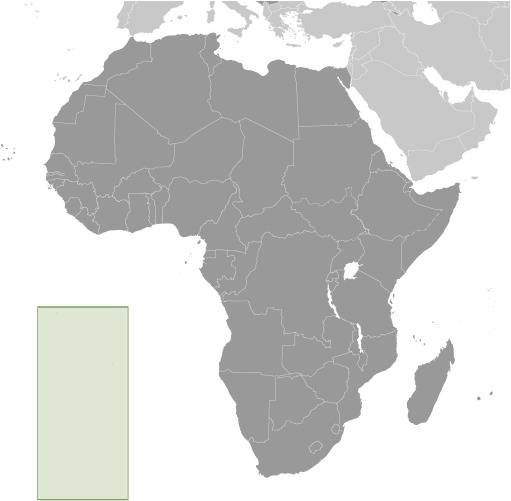
Source: CIA World Factbook
Map of the country:
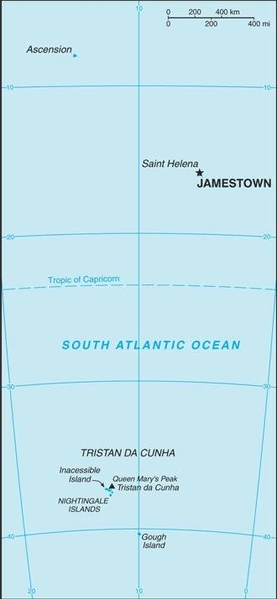
Source: CIA World Factbook

Area: 152 square miles, thereof Saint Helena 47 sq.mi., 4.534 inh. (2016), Ascension 34 sq.mi., 806 inh. (2016), Tristan da Cunha 39 mi², 243 Ew. (2021), with the Islands of Inaccessible and Nightingale, 6,7 sq.mi., all uninhabited, and Gough Island, 35 sq.mi., with the crew of a scientific station
Inhabitants: 5.633 (2016), thereof 50% of African descent, 25% Europeans, 25% Chinese
Religions: mostly Anglicans, some Roman Catholics
Density of Population: 37 inh./sq.mi.
Main Place: Jamestown (on Staint Helena), 625 inh. (2021)
official Language: English
Currency (on Saint Helena und Ascension): 1 Saint Helena Pound (£, SHP) = 100 Pence
Currency (on Tristan da Cunha): 1 Pound Sterling (£, GBP) = 100 Pence
Time Zone: GMT
Source:
Wikipedia (EN),
CIA World Factbook

Saint Helena
21st of May 1502 · the Portugese seafarer João da Nova discovers the uninhabited island, he names it by the Saint Helena, the island becomes occupied and they built a church
ca. 1600 · Saint Helena becomes occupied by the Dutch, the Portugese smallholding becomes destroyed
1659 · (by other sources in 1650) the English East India Company takes Saint Helena over in exchange against land near Cape of Good Hope
1660 · settlement moves, foundation of Fort Saint James
1st of April 1815 · the British government takes over the administration of Saint Helena and appropriates the Islands Ascension and Tristan da Cunha
October 1815 · Napoléon Bonaparte, the Ex-Emperor of France, comes to Longwood on Saint Helena in exile, United Kingdom stationes troops on Saint Helena, Ascension and Tristan da Cunha to prevent an escape/liberation of Napoléon
5th of May 1821 · Napoléon Bonaparte dies in Longwood on Saint Helena
1833 · Saint Helena becomes a British crown colony
1838 · the island Tristan da Cunha and the uninhabited islands of Innaccessible and Nightingale become affiliated to the Colony of Saint Helena as dependence
1840 · the corpse of Napoléon becomes transfered to Paris
1922 · Ascension Island becomes affiliated to the Colony of Saint Helena as dependence
1976 · introduction of an own currency (Saint Helena Pound)
1st of September 2009 · on the British possession "Saint Helena and Dependencies" a new constitution comes into force, the three islands receive the same status as three equal territories under the British Crown; Inaccessible Island, Nightingale Island and Gough Island are attached to Tristan da Cunha, the area is renamed in "Saint Helena, Ascension and Tristan da Cunha"
Ascension
1501 · Portugese seafarers discover the uninhabited Ascension Island
01.04.1815 · the British government appropriates Ascension Island
October 1815 · Napoléon Bonaparte, the Ex-Emperor of France, comes to Longwood on Saint Helena in exile, United Kingdom stationes troops on Saint Helena, Ascension and Tristan da Cunha to prevent an escape/liberation of Napoléon
5th of May 1821 · Napoléon Bonaparte dies in Longwood on Saint Helena, Ascension Island remains occupied and becomes build up to a naval base
1829 · on Ascension Island arises the housing estate of Gerogetown
1922 · Ascension Island becomes affiliated to the Colony of Saint Helena as dependence
1976 · introduction of an own currency (Saint Helena Pound)
Tristan da Cunha
1506 · the Portugese seafarer Tristan da Cunha discovers the uninhabited island, it gets its name
1st of April 1815 · the British government appropriates Tristan da Cunha
October 1815 · Napoléon Bonaparte, the Ex-Emperor of France, comes to Longwood on Saint Helena in exile, United Kingdom stationes troops on Saint Helena, Ascension and Tristan da Cunha to prevent an escape/liberation of Napoléon
5th of May 1821 · Napoléon Bonaparte dies in Longwood on Saint Helena, Tristan da Cunha should become abandoned, but Corporal William Glass, two mariners and their families stay there and establish a housing estate
1838 · the island Tristan da Cunha and the uninhabited islands of Innaccessible and Nightingale become affiliated to the Colony of Saint Helena as dependence
1867 · the housing estate on Tristan da Cunha gets the name Edinburgh
1976 · introduction of an own currency (Saint Helena Pound)
Inaccessible Island
1652 · Dutch seafarers discover the uninhabited island 12,5 miles northwestern of today’s Nightingale Island, they debark under big difficulties but it is not possible to reach the interior, because of that they name the island "Inaccessible"
5th of May 1821 · Napoléon Bonaparte dies in Longwood on Saint Helena, the neighbouring island Tristan da Cunha should become abandoned, but Corporal William Glass, two mariners and their families stay there and establish a housing estate, they release pigs and goats on Inaccessible Island for a later hunt
1871 · the German brethren Stoltenhoff debark on the island and try to live there
1873 · the Stoltenhoffs become rescued by a British research ship
1922 · the antarktic explorer Ernest Shackleton visits the island
1938 · a Norwegian expedition explores the island
1942 · establishment of a British radio and weather station
1962 · a British expedition explores the island, but it is not possible to reach the interior
1982 · a British expedition explores the island
1995 · the island becomes a part of the world nature legacy of the UNESCO
Nightingale Island
1506 · the Portugese seafarer Tristan da Cunha discovers the uninhabited island 19 miles southwestern Tristan da Cunha Island, but the position of the island falls into oblivion
1652 · Dutch seafarers discover the island again and name it "Gebroken Eyland"
1760 · Gabriel Nightingale explores the island, it gets later his name
Gough Island
1506 · the Portugese seafarer Diego Gonçalo Alvarez discovers the uninhabited island 250 miles southeastern of Tristan da Cunha Island and gives it his name (Diego Alvarez), but the position of the island falls into oblivion
1731 · the British seafarer captain Charles Gough discovers the island again, it gets later his name
1810 · seven US-Americans try to settle on Gough Island
1811 · the US-Americans leave the island, a British ship visits the island
1888 · US-American sealers live for five month on Gough Island
1904 · a British expedition explores the island
1922 · the antarktic explorer Ernest Shackleton visits the island
1933 · a Norwegian expedition explores the island
28.03.1938 · United Kingdom appropriates Gough Island, it becomes affiliated to the Colony of Saint Helena as dependence
1942 · a German merchant ship visits the island for repairing
1955 · a British expedition explores the island
1956 · establishment of an until today permanent manned weather watch station by South Africa
1958 · the USA perform three nuclear tests in an altitude of ca. 300 miles
1995 · the island becomes a part of the world nature legacy of the UNESCO
Source: Atlas zur Geschichte,
World Statesmen,
Wikipedia (EN),
Volker Preuß

• The name of the island "Saint Helena" goes back to the day of the discovery of this island by João da Nova. It was the name day of Saint Helena. Helena (ca. 255–ca.330) was the mother of Emperor Constantin the Great. She build together with her son churches in Rome and in the Holy Land. A legend tells us above her playing a part in the find of the cross of Jesus Christ.
• The name of the island "Ascension" goes back to the day of its discovery. It was the day of the Ascension of Christ (Ascensus).
• The name of the island "Tristan da Cunha" is the name of its discoverer (in the year 1506), a Portugese seafarer.
• The name of the island "Inaccessible" goes back to the day of its discovery in the year 1652. It was at that time not possible to reach the interior. It was named "the Inaccessible".
• The name of the island "Nightingale" is the name of a British explorer who explored the island in the year 1760.
• The name of the island "Gough" is the name of its re-discoverer, of captain Gough, who discovered the island again in the year 1731, after its position fell into oblivion since its discovery in the year 1506.
Source: World Statesmen,
Wikipedia (EN),
Volker Preuß


![]()






























